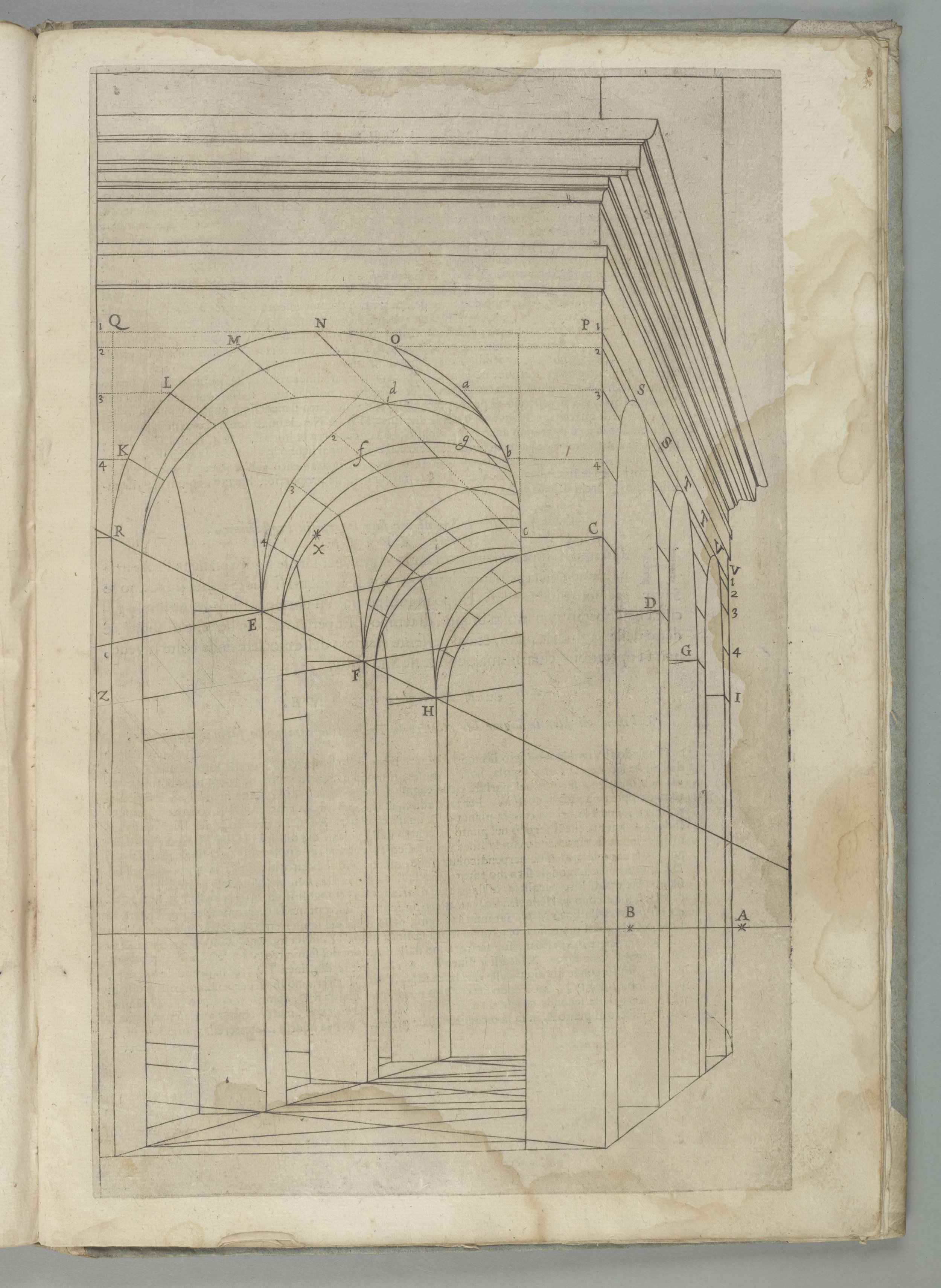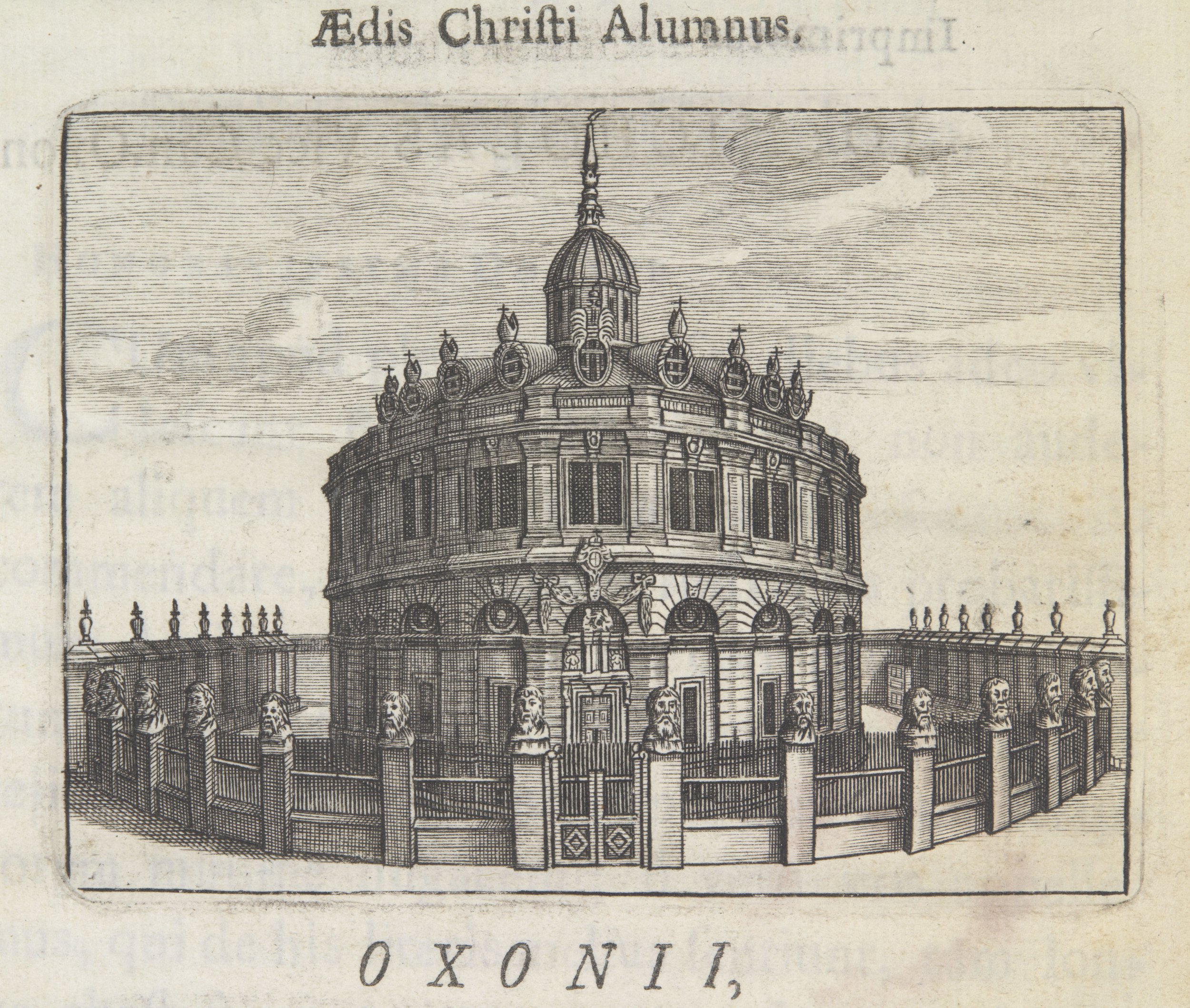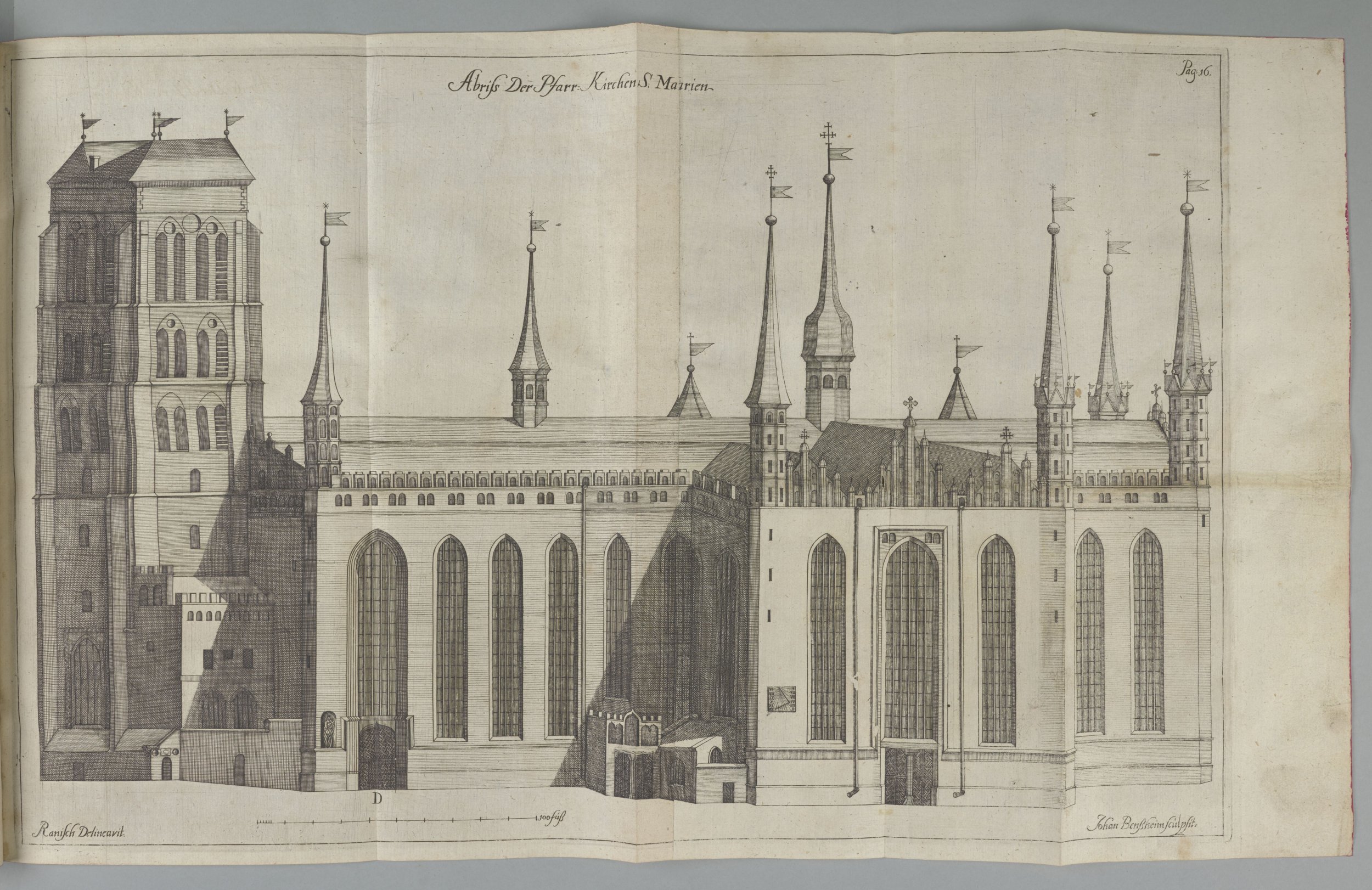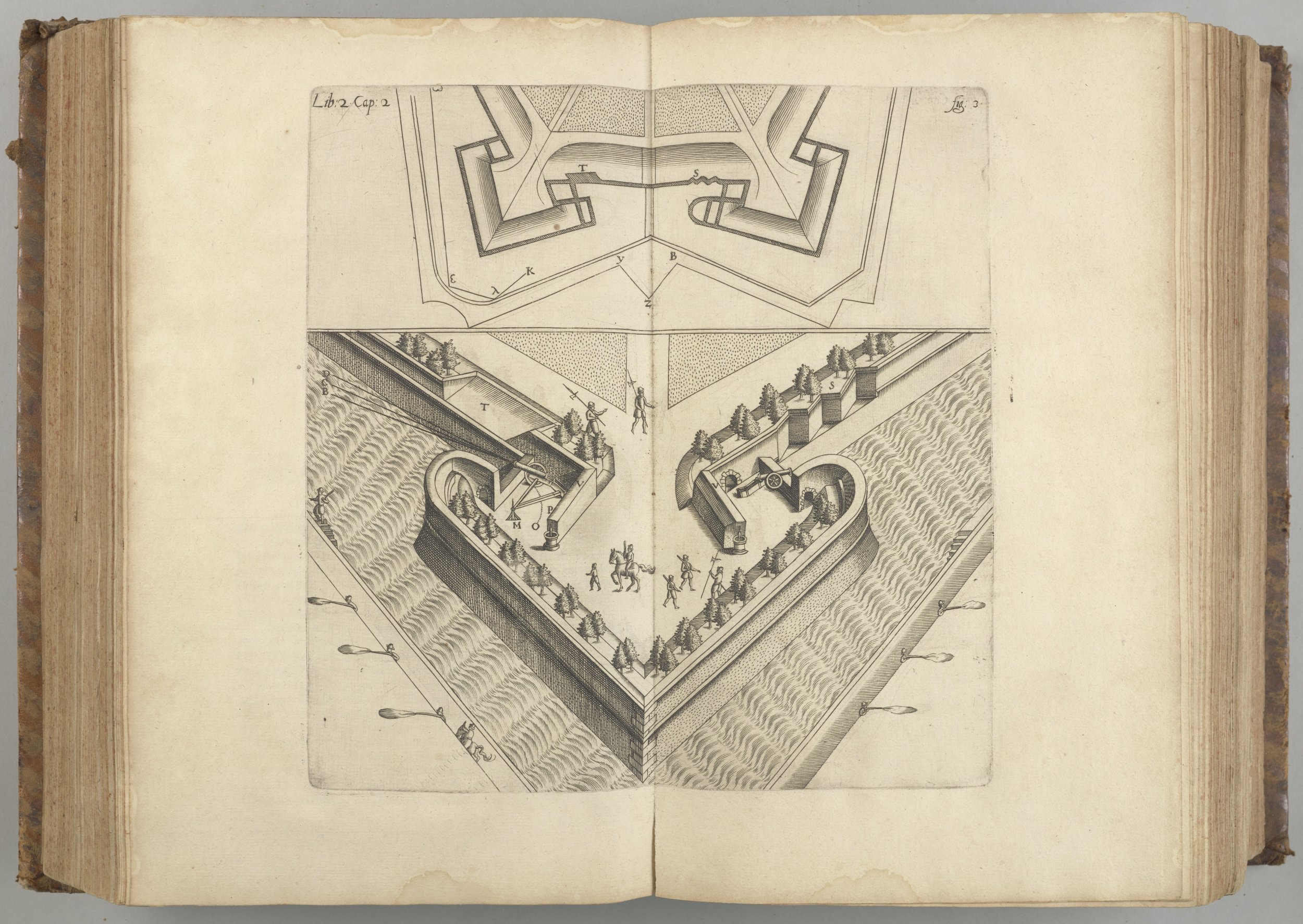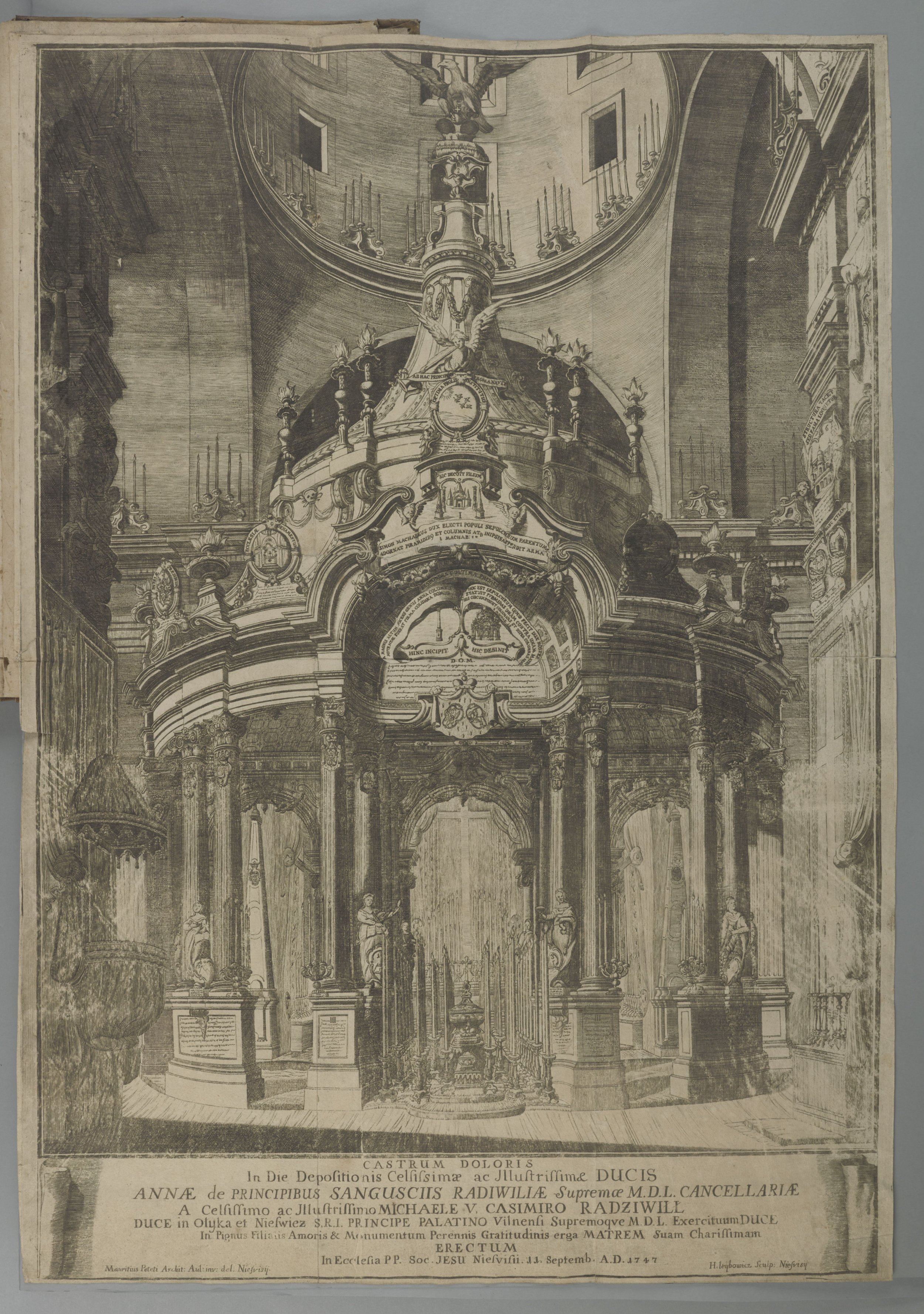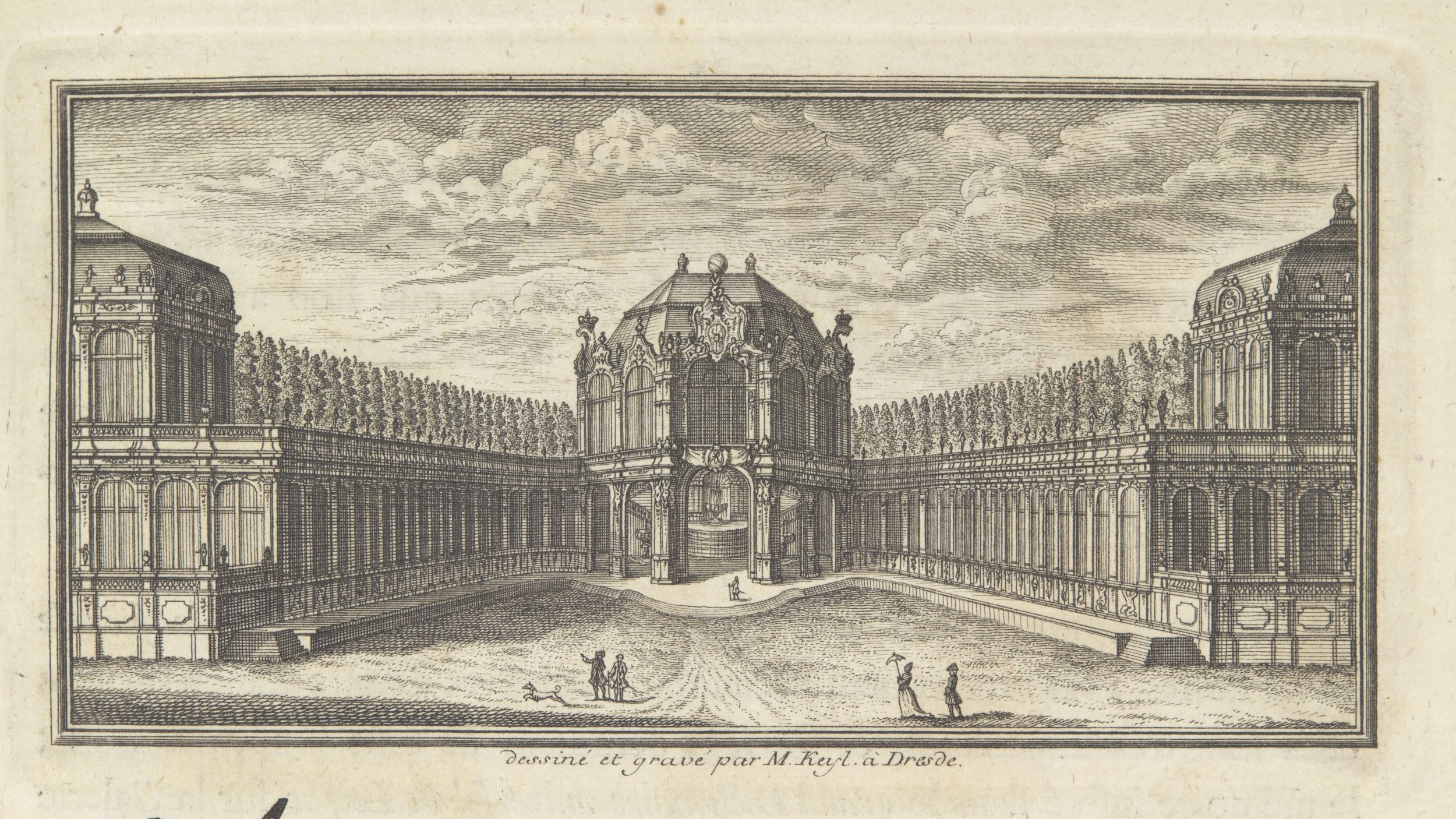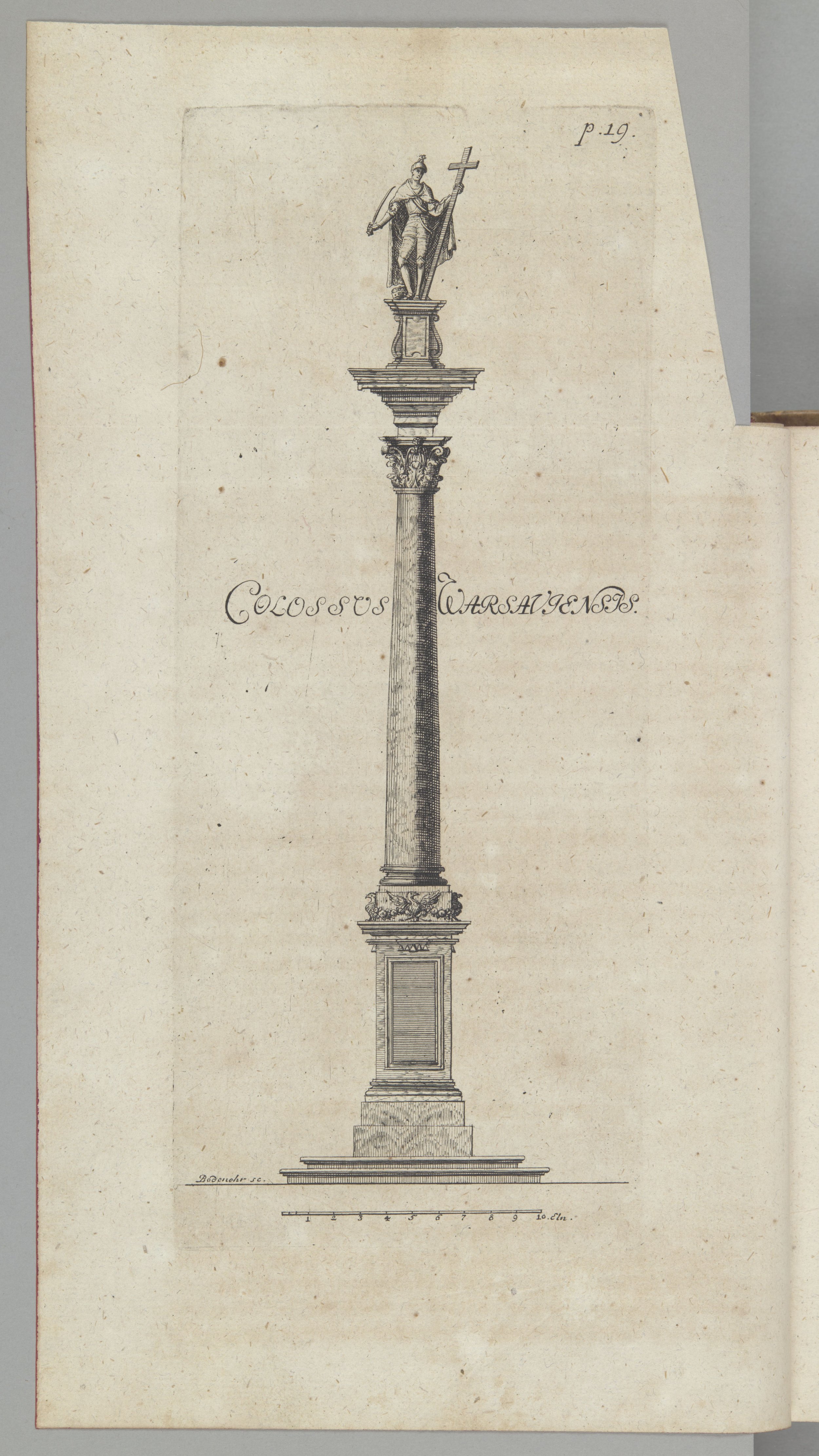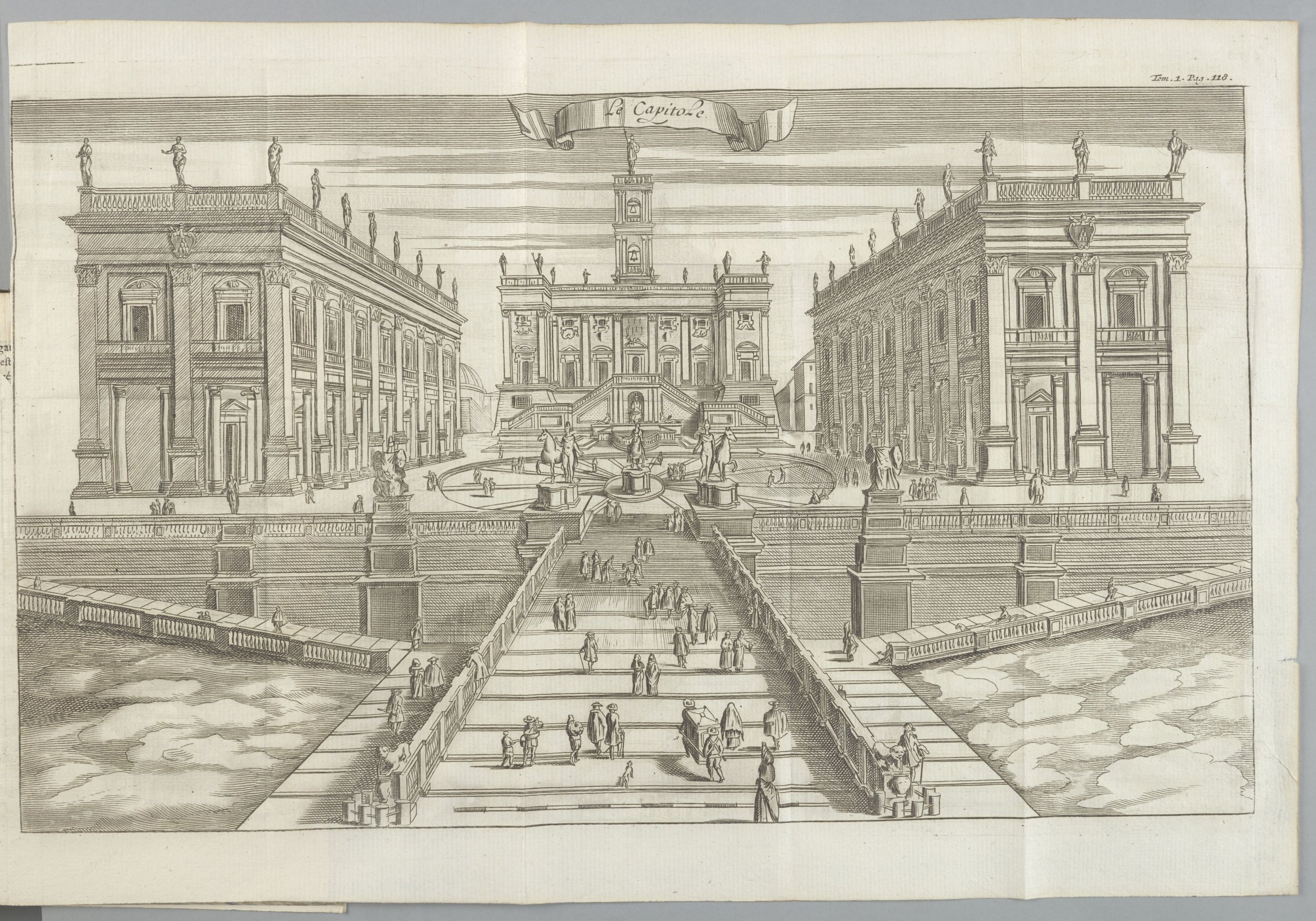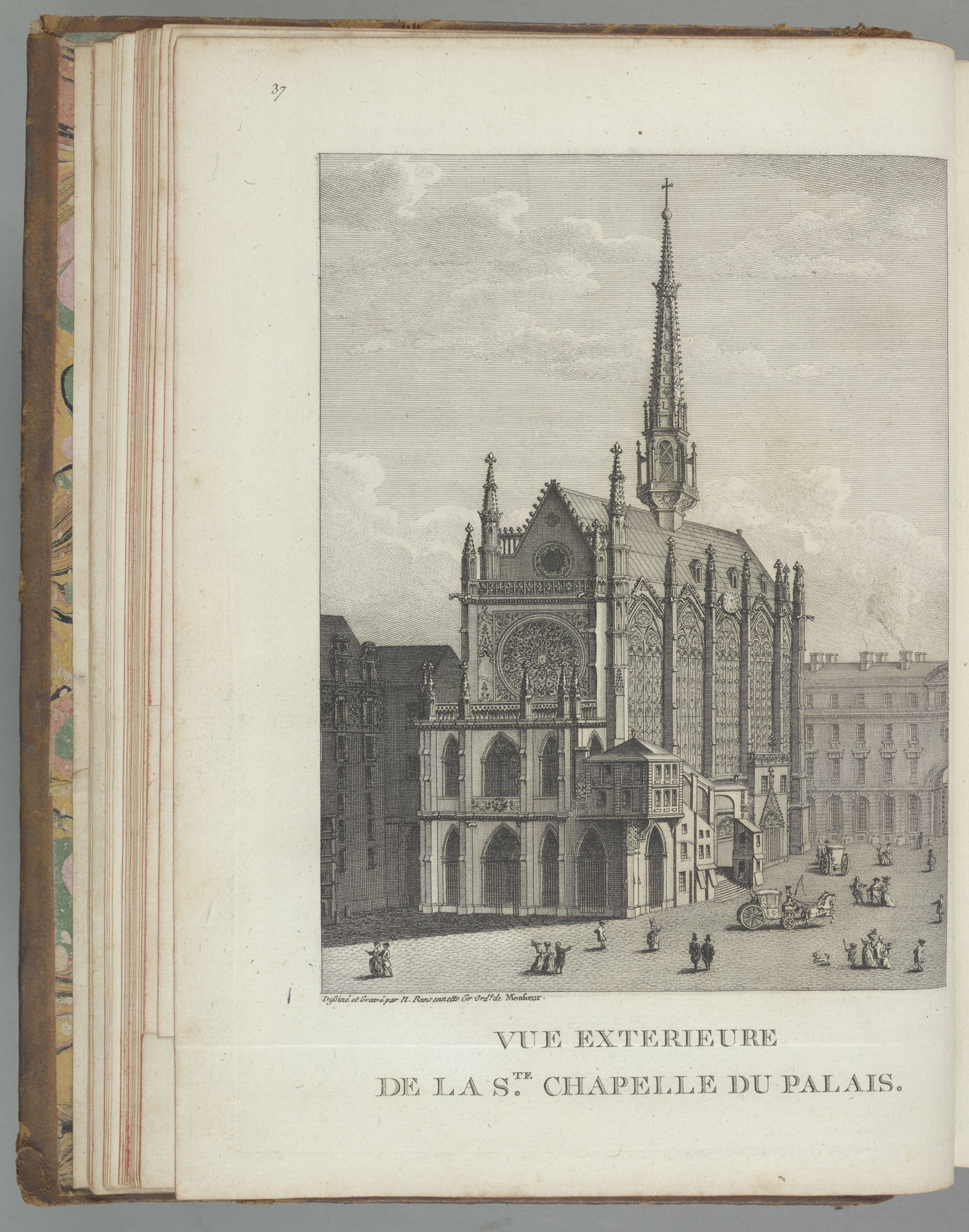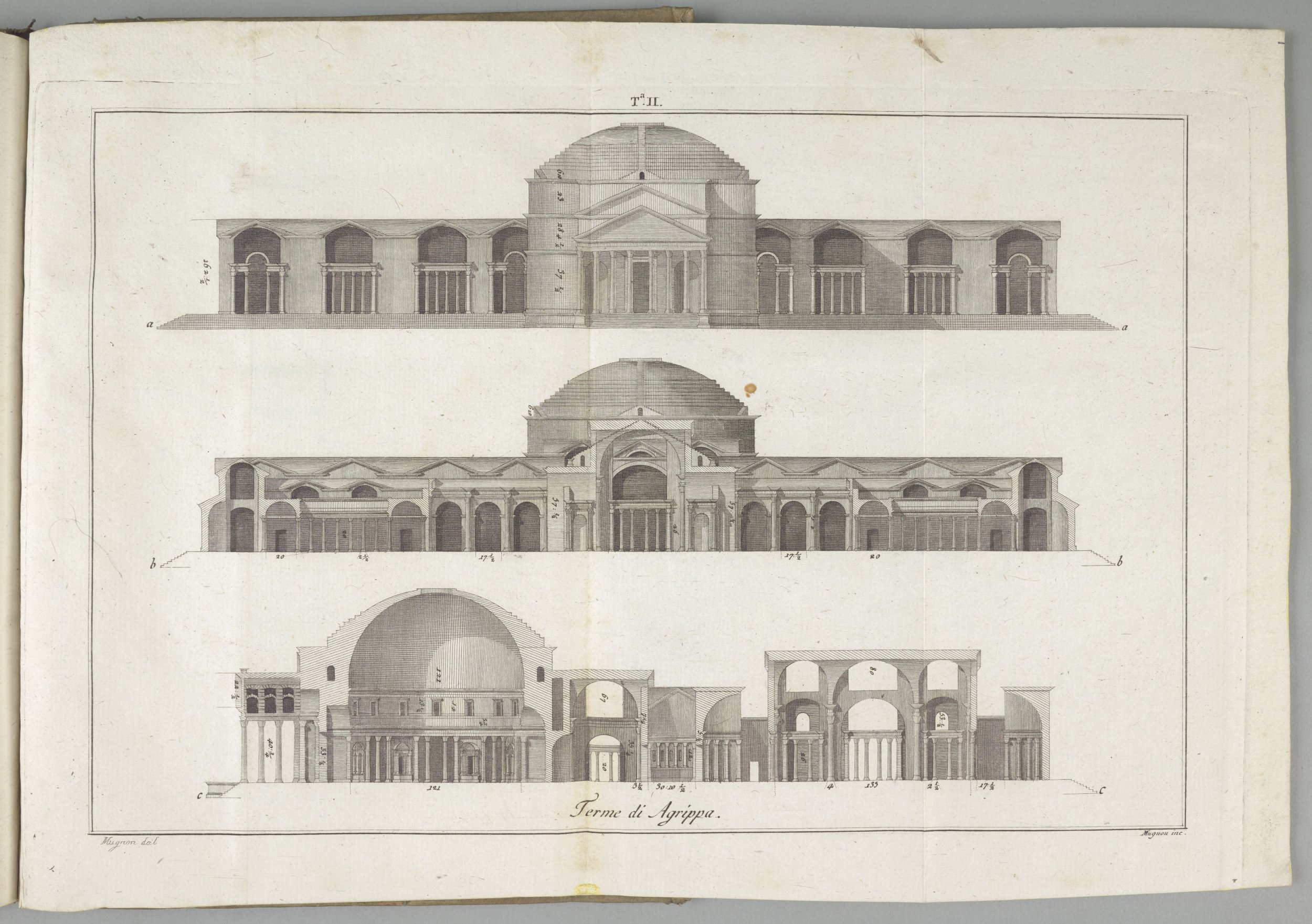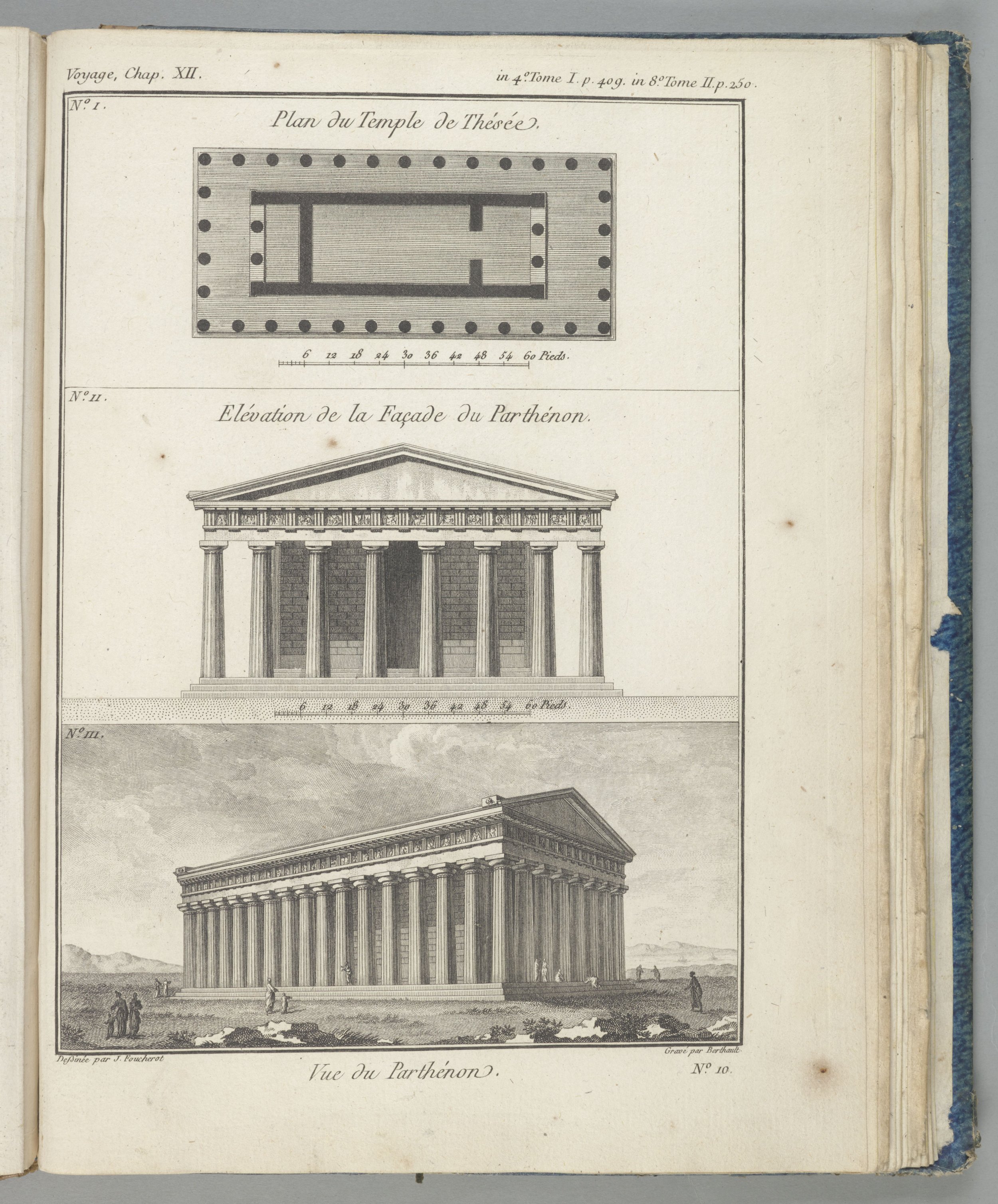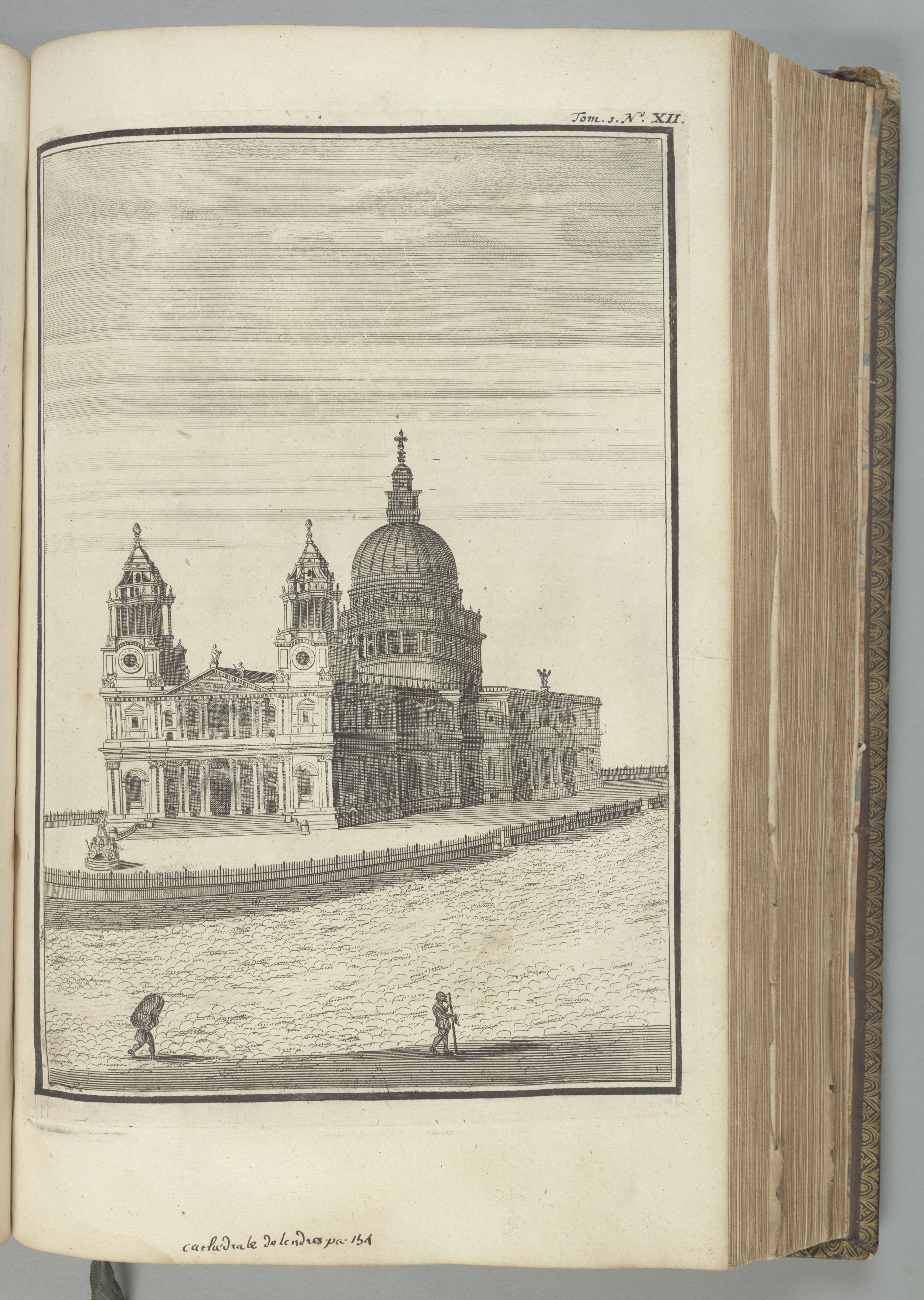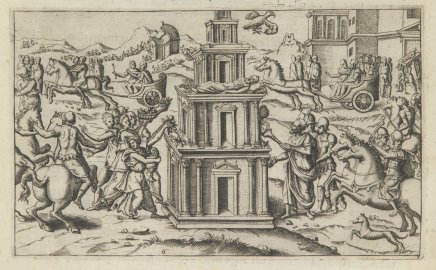Architecture can be approached from many perspectives – through the analysis of its scientific and technical foundations, the craftsmanship of architects, builders and artisans, or according to style, function or purpose. The exhibition shows a cross-section of the richness of this art in 67 old prints and 16 maps and plans, published from the 16th to the 19th century.
The theory of architecture was presented in scholarly treatises. The work On Architecture, written by Vitruvius, a Roman author of the 1st century BC, rediscovered in the early 15th century, exerted a decisive influence on the development of Renaissance architecture. Vitruvius placed great emphasis on proportion and harmony in buildings, which was later continued by other architects. His ideas were taken up by Italian masters, like Leon Battista Alberti and Sebastiano Serlio. Alberti, one of the main precursors of the Renaissance, defined the principles of classical proportions and introduced an innovative approach to linear perspective. Serlio, who worked at the French court, wrote a handbook that influenced the development of architecture throughout Europe. In a later period, the Jesuit and constructor Stanisław Solski was active on Polish soil. His work The Polish Architect describes the principles of designing buildings, as well as of the use of machines in construction.
The monuments of the ancient world were shown through guidebooks and travel accounts. Pausanias, a Greek geographer that lived in the 2nd century, authored the first guidebook to the ancient Greek world. The accounts of 16th-, 17th- and 18th-century travellers, such as Mikołaj Krzysztof Radziwiłł known as “Sierotka,” Cornelis de Bruyn and Jean Struys, give information on, among other things, the pyramids of Giza, Persepolis with the tombs of the Persian kings, and ancient Greek and Roman temples.
Sacred architecture perfectly illustrates the formal transformations over the centuries. The verticality and grandeur of Gothic architecture impress in buildings like the Parisian Sainte-Chapelle or Saint Mary’s Church in Gdańsk. Their monumental form reflects the spiritual and artistic vision of the Middle Ages. St Peter’s Basilica in the Vatican is not only a symbol of the Renaissance revival of ancient ideals, but also a bridge to Baroque expression, which could also take shape in such forms as Saint Paul’s Cathedral in London. What stands out against these well-known churches are Polish sanctuaries: the Jasna Góra Monastery and the abbey at Święty Krzyż – places of great religious and architectural significance.
Secular architecture is represented above all by palaces and public buildings. Worthy of note are the Gothic Doge’s Palace in Venice, the Zwinger in Dresden, characterised by Baroque splendour, and the neoclassical Hôtel de Ville in Nancy. No less interesting are the Royal Hospital in Plymouth, a prison building and even a simple water mill – buildings important in everyday life, designed also for future generations. Military buildings represent a special kind of architecture, depicted in views of fortresses and bastions.
The beauty of architecture also lies in detail. The artistry of past masters can be admired in decorative interiors, fountains, monuments and altars. Excellent examples are the famous Baroque Hall of Mirrors in the Palace of Versailles and the numismatic cabinet in the former Elector’s residence in Berlin. The Neptune Fountain in Nancy is known for its Rococo charm. Noteworthy are also two monuments: Sigismund’s Column in Warsaw and the Column of St Januarius in Naples, as well as the Holy Door opened for the Jubilee Year of 1650 in Rome.
A fascinating phenomenon in the history of art and architecture is so-called ephemeral architecture – temporary, created for specific occasions. Though not durable, it could make a great impression, especially through grand funerary constructions. We can see not only reconstructions of ancient funeral rites, but also spectacular modern castra doloris – decorative catafalques erected for mourning ceremonies. It is exemplified by the impressive funeral settings for Maria Klementyna Sobieska and her grandfather, King John III Sobieski. What attracts attention are also provisional structures built for special events, like the coronation of the image of Our Lady in Berdychiv. Although all these buildings were temporary, their aesthetics and symbolic significance earned their place in the history of architecture.
Curators: Iwona Długopolska, Patryk Niemiec
MNK The Czapski
ul. Piłsudskiego 12, 31-109 Kraków- Monday: closed
- tue: 10.00-18.00
- wednesday-sunday: 10.00-16.00

